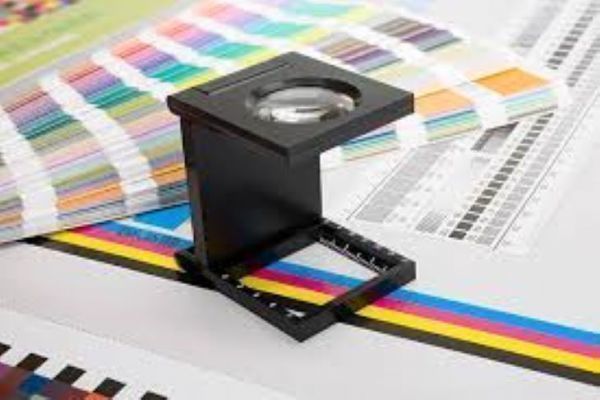Cromalin is not what it used to be! Originally, the Cromalin was mainly used to control the conformity of the chromy by the professionals of the thread count. From now on, it is a generic term designating a laser or inkjet printing used as a proof.
Cromalin entered the jargon of the world of the printing very precisely in 1972, date of the marketing by the American company Dupont de Nemours of the system of épreuvage color of the same name.
This print was printed on 250 g/m² glossy paper 2 whose surface was laminated with a photosensitive layer. A set of four films (typons), one for each color, allowed the corresponding powdered pigment to be applied to the support one by one.
A faithful and contractual color proof
This print was intended to be a faithful reflection of what was to come off the press (offset in most cases) and therefore had a contractual value. Realized on a 250 g/m² glossy support 2 it made it possible to check, with the eye riveted on the thread counter, the superposition of inks, the ink load, the widening of the screen point thanks to the small side strip of control (Brunner). This test was accompanied by its progressive range (magenta, yellow, magenta + yellow, cyan, cyan + magenta + yellow, black, black + cyan + magenta + yellow).
And there was no question of making any text or layout corrections when the Cromalin was released, because the famous proof was drawn up before this stage.
Cromalin, the drawback of its beauty
Although it made it possible to detect colorimetric problems, Cromalin had the disadvantage of being... too beautiful, the support used not being that of the final impression in most cases. A quadri on an offset 90 g/m 2 or a 150 g/m² matt coating 2 does not look the same as on a 250 g/m² glossy coating 2 âeuros!
However, there was a solution for those who wanted to be sure of the quality of the printing: the "tir-à-part" or "bon-à-rouler" which consisted in validating a sheet leaving the press. But that was before.
The name of this first proofing system was later used to designate other similar systems from other suppliers. Then the digital era sounded the death knell of this type of proof. Cromalin remained in the memory of the printing industry and the vocabulary by becoming a generic term for color proofs.












